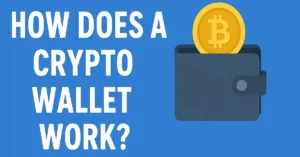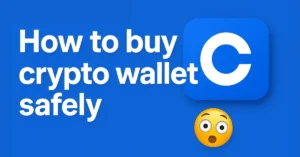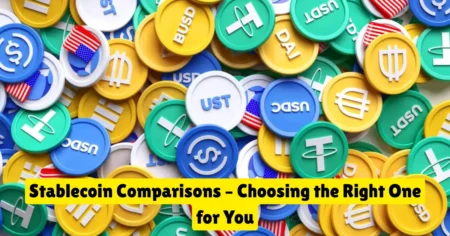Crypto app review
Introduction to Crypto Apps
What are Crypto Apps?
Crypto apps are software applications designed to facilitate various activities within the cryptocurrency ecosystem. Whether you’re trading Bitcoin, storing Ethereum, or tracking your Shiba Inu portfolio, these apps serve as your gateway to the world of digital currencies. Think of them as your all-in-one crypto command center—mobile or desktop-based tools that help you manage, monitor, and grow your investments.
At their core, crypto apps perform functions such as buying and selling cryptocurrencies, managing wallets, tracking prices, and reading market news. Some apps are multi-purpose, combining several features, while others specialize in a single task, like secure storage or in-depth analytics.
These apps connect to online exchanges and wallets, providing users with a seamless and intuitive experience. Whether you’re a complete beginner or a seasoned investor, there’s a crypto app that fits your needs. The explosion of interest in digital currencies has driven innovation in this space, leading to a competitive market full of features and options.
Why Are They Important in Today’s Digital World?
The growing reliance on digital finance makes crypto apps more relevant than ever. With decentralized finance (DeFi) and Web3 becoming mainstream concepts, people need reliable tools to manage their digital assets. Crypto apps have democratized access to financial tools once reserved for professionals.
Gone are the days when you needed a trading desk or high-powered computer to participate in the crypto market. With a smartphone and the right app, anyone can buy, sell, or store crypto securely within seconds. This shift is especially significant in regions with limited access to traditional banking services, as crypto apps provide a form of financial inclusion.
Moreover, these apps promote transparency, decentralization, and autonomy. You hold your keys, you own your assets. Unlike banks that impose restrictions, crypto apps empower users with full control over their funds. As the digital economy evolves, crypto apps are becoming essential tools for navigating financial freedom in a connected world.
Types of Crypto Apps Available
Trading Apps
Trading apps are arguably the most popular type of crypto applications. These platforms let you buy and sell digital currencies directly from your phone or computer. Major players like Binance, Coinbase, and Kraken fall into this category. These apps are designed for fast execution, offering tools like real-time charts, market orders, stop-loss settings, and trading bots.
They cater to both beginners and pros. Beginners enjoy features like instant buy/sell, simplified interfaces, and educational resources. Advanced traders, on the other hand, benefit from margin trading, derivatives, futures, and detailed analytical charts.
Some trading apps are centralized (CEXs), meaning they are controlled by a company, while others are decentralized (DEXs), running on blockchain protocols. Each has its pros and cons, but both offer ease of access and real-time transaction capability.
Wallet Apps
Wallet apps are crucial if you’re serious about holding cryptocurrencies securely. These apps store your private keys, which are required to access and use your crypto. There are two main types: hot wallets (connected to the internet) and cold wallets (offline).
Apps like Trust Wallet, MetaMask, and Exodus are popular examples. They let you store, send, and receive a wide variety of tokens, often across multiple blockchains. Some also allow staking, earning rewards by locking your tokens.
Security is the name of the game here. Good wallet apps come with encryption, PIN protection, biometric access, and recovery phrases. Unlike trading apps, wallet apps give you full ownership of your assets—no middlemen involved.
Portfolio Trackers
Ever found it hard to track your crypto investments across multiple platforms? That’s where portfolio tracker apps step in. Apps like CoinStats, Blockfolio (now FTX), and Delta let you sync your exchange accounts and wallets to get a holistic view of your holdings.
These apps show real-time price movements, profit/loss summaries, allocation charts, and performance over time. You can set alerts, track news for each coin, and monitor market sentiment. They’re a lifesaver for anyone with more than a few coins in play.
News & Analytics Apps
The crypto market is driven by information. One tweet can cause prices to soar—or plummet. News and analytics apps keep you in the loop. Platforms like CoinGecko, CoinMarketCap, and CryptoPanic provide up-to-date news, exchange data, market trends, and token analysis.
These apps are ideal for those who want to stay informed without browsing ten websites. From whale alerts to regulatory updates, these platforms help you stay ahead of the curve. Some even offer fear & greed indices or developer activity metrics for in-depth research.
Top Features to Look For in a Crypto App
Security Features
Security should always be your number one priority when choosing a crypto app. A good app protects you from hacks, phishing, and loss of funds. At a minimum, it should offer two-factor authentication (2FA), biometric login, and data encryption.
More advanced apps offer withdrawal whitelists, cold storage for user funds, and insurance policies. Centralized exchanges may also hold licenses from financial regulators, offering an added layer of trust.
Before downloading, check if the app has suffered data breaches in the past. Read user reviews and look into the company’s reputation. Your crypto is only as secure as the app you store it on.
User Interface and Experience
Even the most secure app is useless if you can’t figure out how to use it. The user interface (UI) and overall experience (UX) matter a lot—especially for beginners. Look for apps that are clean, easy to navigate, and responsive.
Some apps offer customizable dashboards, light and dark modes, and multilingual support. Others go the extra mile with interactive tutorials, demo trading accounts, and real-time support. If you’re trading or transferring funds regularly, a clutter-free experience can save you from making costly mistakes.
Supported Cryptocurrencies and Tokens
The more coins an app supports, the better. Popular apps support Bitcoin, Ethereum, Solana, BNB, and a wide range of altcoins and stablecoins. Some also allow token swaps across chains using bridges or DEX integrations.
Whether you’re into large-cap coins or micro-cap gems, your app should let you trade or hold them without hassle. Check if the app supports ERC-20, BEP-20, and other token standards relevant to your investment goals.
Transaction Fees and Pricing Models
Every app comes with a cost. Some charge fixed fees per transaction, while others take a percentage cut. There may also be hidden fees in the form of spreads—the difference between buy and sell prices.
Look into deposit and withdrawal fees, network fees, and any subscription or premium plans. Some apps offer fee discounts for holding native tokens or using their in-house wallets. Comparing costs upfront helps you maximize profits and avoid unpleasant surprises.
Best Crypto Apps in 2025 (Reviewed and Compared)
Binance App
Binance remains a top-tier choice for both beginners and seasoned investors. It supports hundreds of cryptocurrencies and offers features like spot trading, futures, staking, and launchpad access. Its interface balances simplicity with powerful tools, and it boasts some of the lowest fees in the market.
Coinbase App
Perfect for U.S.-based users and beginners, Coinbase offers a clean, intuitive design with educational content and rewards for learning. It’s regulated and secure but comes with slightly higher fees than competitors.
Kraken App
Kraken is known for its strong security and regulatory compliance. It supports a wide range of crypto assets and provides advanced trading tools. However, its UI might be less friendly for absolute beginners.
Trust Wallet
Ideal for mobile users who want full control over their funds. Trust Wallet supports multiple blockchains and allows staking, token swaps, and DApp browsing—all from your phone.
CoinMarketCap and CoinGecko Apps
While not trading platforms, these apps are indispensable for market analysis. They provide live data, market rankings, price charts, and news—all in one place.
In-Depth Review of Binance App
Key Features
Binance is more than just an exchange—it’s an entire ecosystem. The Binance app gives users access to a wide array of services that go beyond basic crypto trading. From spot and futures markets to staking, liquidity farming, and NFT marketplaces, Binance has it all under one roof.
One of its standout features is the dual-interface design: “Binance Lite” for beginners and “Binance Pro” for experienced traders. This gives users flexibility depending on their comfort level with crypto trading. The app supports hundreds of tokens including Bitcoin, Ethereum, BNB, Solana, and various stablecoins.
Another key feature is its cross-platform sync. You can use the desktop, web, or mobile version interchangeably, and your data remains intact across devices. Additionally, Binance integrates a savings account model, offering passive income options via Flexible Savings and Locked Staking.
The app also provides API access for developers, real-time alerts, detailed market analytics, price charts with multiple indicators, and seamless fiat-to-crypto transactions via credit card, P2P, and bank transfers.
Pros and Cons
Pros:
- Extremely low trading fees
- Massive selection of coins and trading pairs
- Advanced features (margin, futures, staking)
- High liquidity ensures quick order execution
- Multiple fiat payment options
- Available in over 180 countries
Cons:
- Complex for beginners (even with Lite mode)
- Regulatory challenges in certain countries
- KYC (Know Your Customer) requirements may seem intrusive
- Customer support can be slow during peak times
While Binance has faced regulatory scrutiny in several regions, it continues to remain a dominant player due to its innovations and constant feature rollouts. The key is using it responsibly and understanding the features you actually need.
User Experience and Security
In terms of UX, Binance has made significant strides. The app is responsive, loads quickly, and rarely crashes. It features an intuitive home screen with quick access to markets, trades, and your wallet. Navigation is smooth, and switching between Lite and Pro versions is just a tap away.
Security-wise, Binance is among the best in the business. It offers multi-tiered protection including 2FA, anti-phishing codes, withdrawal address whitelisting, and device management. Additionally, it has the SAFU (Secure Asset Fund for Users)—a reserve fund created to reimburse users in case of a major breach.
Despite a hack in 2019, Binance reimbursed all affected users promptly, reinforcing its commitment to customer security. It has since improved its defenses, investing heavily in security infrastructure and compliance tools.
How to Choose the Right Crypto App for You
Identify Your Purpose: Trading vs. Holding
Before choosing a crypto app, ask yourself: What’s my primary goal? If you’re looking to actively trade, you’ll want a platform with advanced charting tools, low fees, and real-time order execution. Apps like Binance, Kraken, or Bybit are built for that.
On the other hand, if you’re more focused on buying and holding long-term, a simple and secure wallet app might be more appropriate. Coinbase Wallet, Trust Wallet, and Exodus are ideal for this purpose. They provide ease of use and top-notch security without overwhelming you with technical features.
Some users may want a hybrid approach—a platform for both trading and holding. In that case, apps like Crypto.com and Binance offer the flexibility to switch roles effortlessly.
Compare Security and Regulatory Compliance
Security should be non-negotiable. Always opt for apps that implement strong encryption, offer 2FA, and allow you to set up anti-phishing codes. Research the company’s security track record—has it ever been hacked? If so, how did they respond?
Regulatory compliance is another crucial factor. Apps that are regulated in your country are less likely to disappear overnight. They’re also more likely to follow financial laws that protect your rights. Coinbase, for instance, is a publicly listed company in the U.S. and adheres to strict guidelines.
Also, look into whether the app stores user funds in cold wallets or has insurance coverage for unexpected losses. Some apps even display third-party audit results for transparency.
Read User Reviews and Ratings
Before downloading any app, check what real users have to say. Reviews on the App Store or Google Play can reveal potential issues like bugs, withdrawal delays, or poor customer support. Be wary of overly positive or suspiciously negative reviews—they could be manipulated.
You can also visit crypto forums like Reddit or BitcoinTalk to get community opinions. Look for discussions about updates, fees, and feature reliability. Experienced users often share insights that you won’t find on the app’s marketing page.
Pay attention to the app’s update history. An actively updated app shows that the developers are fixing bugs and adding new features based on user feedback. If the app hasn’t been updated in months, that’s a red flag.
Safety Tips While Using Crypto Apps
Enabling Two-Factor Authentication (2FA)
2FA is the first line of defense against unauthorized access. It adds an extra layer of security by requiring a code from your phone (or email) in addition to your password. Most crypto apps support Google Authenticator, Authy, or SMS-based 2FA.
Never skip this step. Without 2FA, anyone with your password can access your funds. Also, avoid using the same 2FA code for multiple platforms—it defeats the purpose.
Keep your 2FA backup codes safe. If you lose access to your device, these codes will be your only way to recover your account.
Avoiding Phishing Attacks
Phishing is one of the most common ways crypto users lose funds. Hackers often send fake emails or create replica websites that look like real crypto platforms. Once you enter your login credentials, they gain full access.
To avoid this:
- Always double-check the website URL
- Avoid clicking on suspicious links in emails or messages
- Set up anti-phishing codes in apps that support them
- Never share your recovery phrase with anyone—no legit service will ask for it
Consider using browser extensions like MetaMask with phishing detectors, and install antivirus software that blocks malicious sites.
Regularly Updating Your App
Crypto is an ever-evolving space, and so is app security. Developers constantly release updates to fix vulnerabilities, improve performance, and introduce new features. An outdated app could be vulnerable to exploits.
Enable automatic updates on your phone or check manually every week. Also, follow the official social media channels of your crypto app to stay informed about critical updates or maintenance.
Future of Crypto Apps
Trends to Watch
The future of crypto apps is incredibly promising, thanks to emerging technologies and growing mainstream interest. We’re seeing more AI-driven features for trading signals, voice-activated commands, and even smart contracts managed directly from mobile apps.
Another trend is the move toward decentralized apps (dApps) that operate without centralized servers. This gives users more privacy, autonomy, and resistance to censorship.
Apps are also integrating with traditional finance. Some now offer crypto debit cards, loans against crypto collateral, and integrations with banks and PayPal.
Integration with DeFi and NFTs
DeFi (Decentralized Finance) is reshaping how financial services work. Apps are rapidly integrating DeFi features like yield farming, liquidity pools, and lending protocols. MetaMask, for example, now lets users connect to DeFi platforms directly through its wallet interface.
NFTs (Non-Fungible Tokens) are another area of growth. Apps like Trust Wallet and Coinbase Wallet now let you store and showcase NFTs, and even access NFT marketplaces.
The merging of DeFi and NFTs into crypto apps opens doors for more complex financial strategies, all accessible from your phone. Imagine earning interest on your NFTs or collateralizing them for loans—those days are coming fast.
Regulatory Developments
Governments are paying closer attention to crypto, which means regulation is on the horizon. Apps will need to comply with Know Your Customer (KYC) and Anti-Money Laundering (AML) rules. While this may feel restrictive, it could make crypto apps safer and more mainstream.
Expect future apps to include features like tax calculation tools, audit trails, and legal compliance modules to meet global regulations. These changes could boost public trust and drive wider adoption of cryptocurrencies.
Conclusion
Choosing the right crypto app can feel overwhelming, especially with so many options available. But if you take a step back and evaluate your needs—whether it’s trading, storing, tracking, or analyzing—you can narrow down your options significantly. From the ultra-secure Binance and Kraken apps to beginner-friendly interfaces like Coinbase and Trust Wallet, there’s something out there for every type of user.
Crypto apps have revolutionized how we interact with digital currencies. They’re faster, more secure, and more accessible than ever before. But they’re not all created equal. Prioritize security features like 2FA and cold storage, ensure the app supports the cryptocurrencies you care about, and always read user reviews before committing.
Staying informed is key in this fast-moving world. Crypto apps are not just tools—they’re your entry point into a new financial frontier. Use them wisely, keep security top of mind, and stay updated with trends like DeFi, NFTs, and AI integrations. The future of money is digital, and these apps are your passport to that future.
So whether you’re just starting out or looking to upgrade your toolkit, remember: the best crypto app is the one that fits your specific goals. Test a few, stick with the one that earns your trust, and continue learning every step of the way.
Frequently Asked Questions
Are crypto apps safe for beginners?
Yes, most mainstream crypto apps are designed with beginners in mind. Apps like Coinbase and Trust Wallet offer simple user interfaces, educational content, and basic security features like 2FA. However, it’s crucial that new users take time to learn about security best practices, such as avoiding phishing scams and securely storing recovery phrases.
Which is the cheapest crypto trading app?
Binance is often considered the cheapest due to its low trading fees, starting at 0.1% per trade and dropping further with volume or if you pay fees using BNB (Binance Coin). Other apps like KuCoin and Bybit also offer competitive fee structures. Always check fee transparency before you commit to a platform.
Can I use multiple crypto apps at once?
Absolutely. Many investors use different apps for different purposes—one for trading, one for storing assets, and another for tracking performance. This strategy not only improves security by spreading risk but also lets you enjoy the strengths of various platforms. Just make sure you stay organized and keep track of your recovery phrases and login credentials.
What happens if my crypto app gets hacked?
If your app or the exchange behind it gets hacked, your funds could be at risk—especially on centralized platforms. However, top apps like Binance have insurance funds like SAFU to reimburse users in the event of a breach. Always enable 2FA, use strong passwords, and withdraw large amounts to cold wallets to minimize risk.
How often should I update my crypto app?
You should always keep your crypto app updated to the latest version. Developers regularly release updates to patch security vulnerabilities, introduce new features, and improve performance. Enabling auto-updates or manually checking for updates weekly is a good practice to ensure your app runs securely and smoothly.
Also read
- What is a Crypto Wallet and How Does It Work? – Coinsify
- 10 Crypto Terms Every Beginner Must Know – Coinsify
- What is Blockchain Technology – Complete Guide – Coinsify
- How to Buy Crypto Safely in 2025 – Complete Guide – Coinsify
- Bitcoin vs Ethereum: Key Differences Explained – Complete Guide
- Ultimate Blockchain Glossary: Learn Blockchain Terms Easily
- How to Buy Bitcoin Safely (Complete Beginner’s Guide)
- Top 10 Crypto Wallets for Beginners (2025 Edition)
- What is Cryptocurrency? A Beginner-Friendly Guide (2025)






